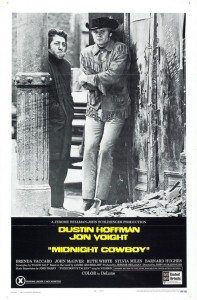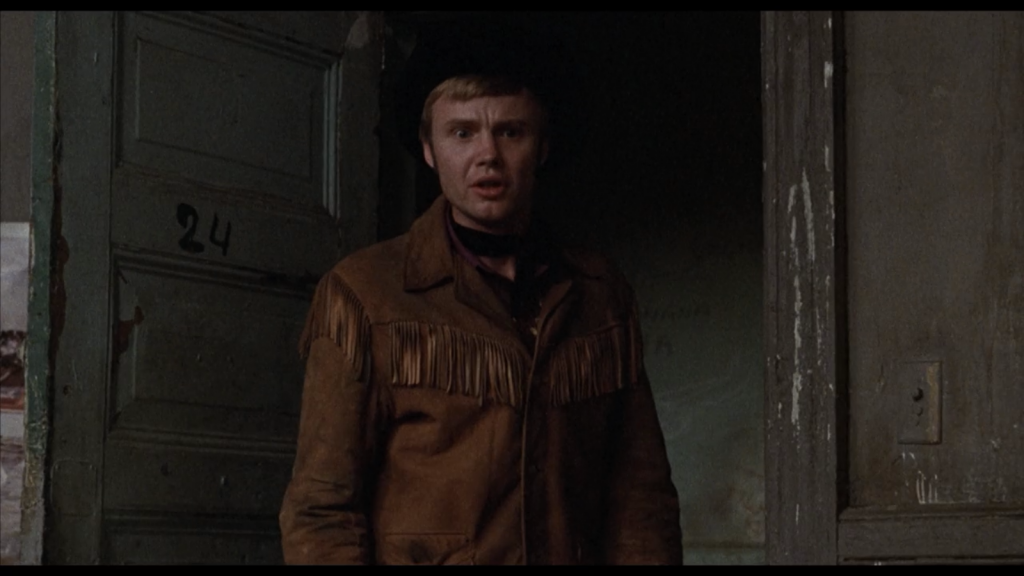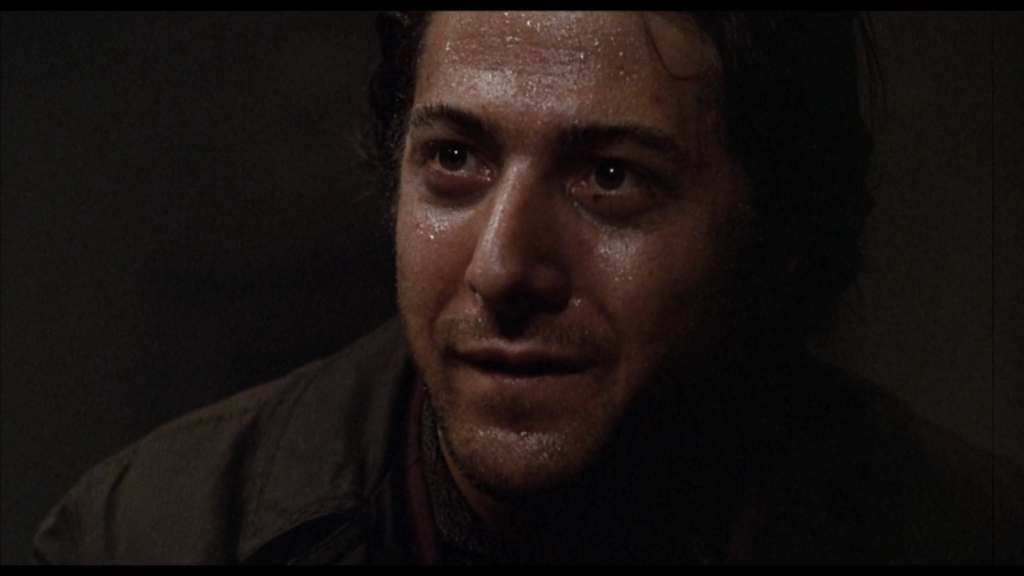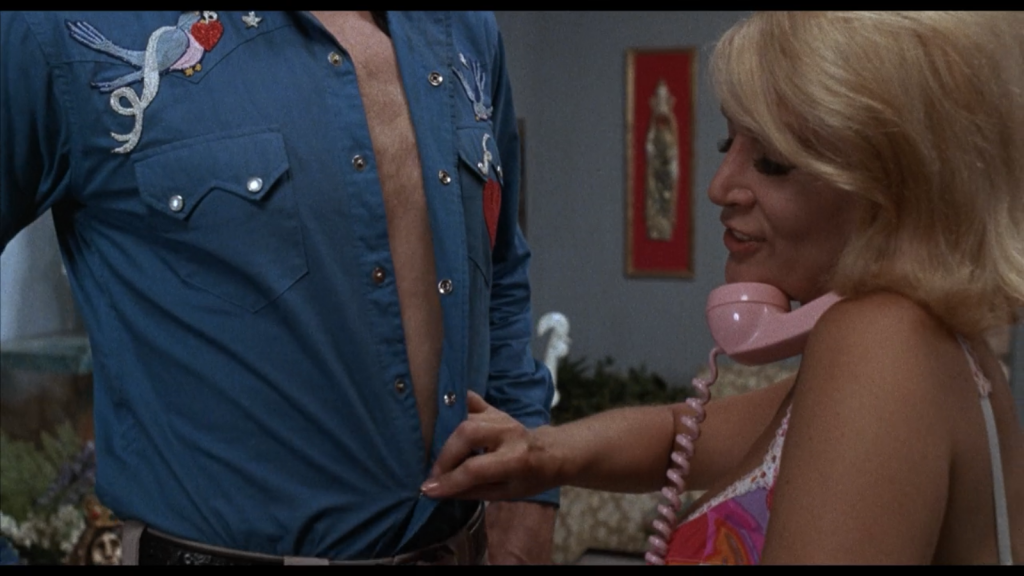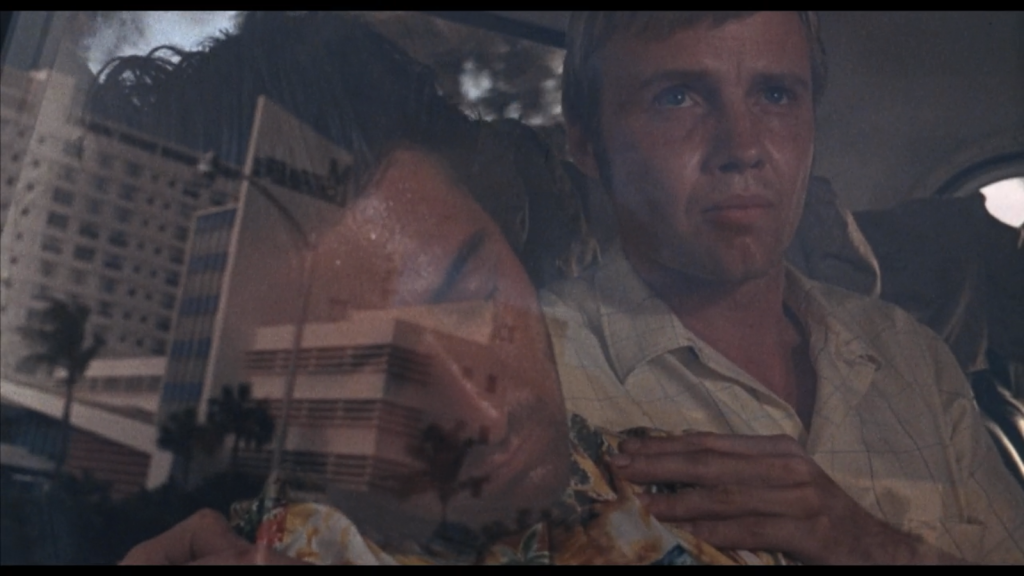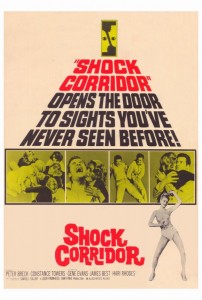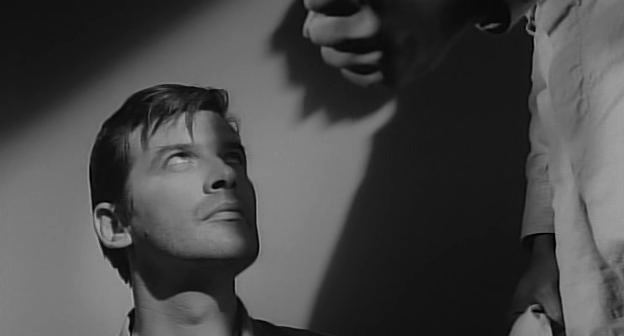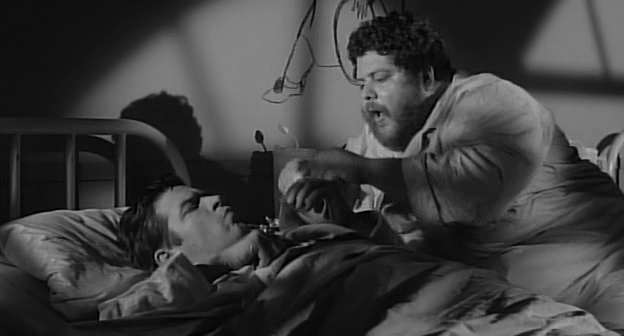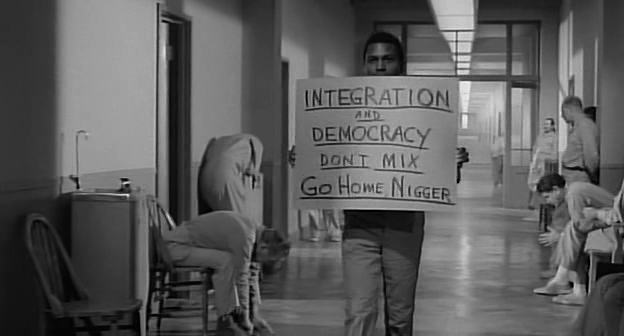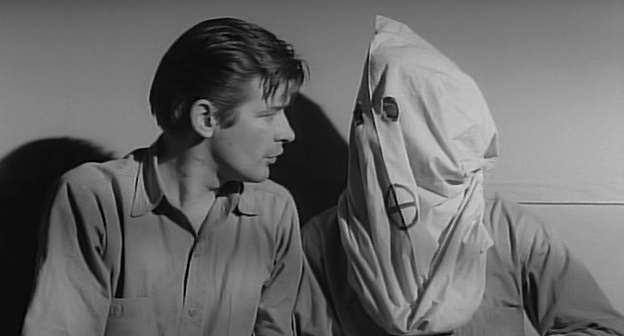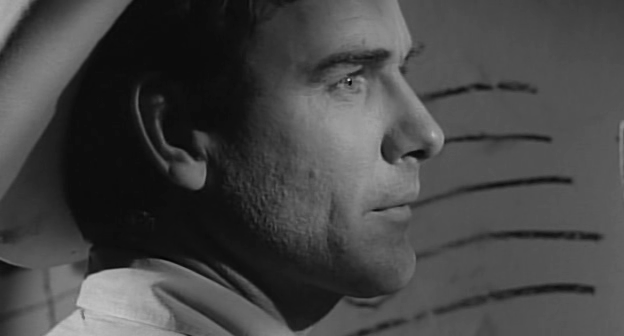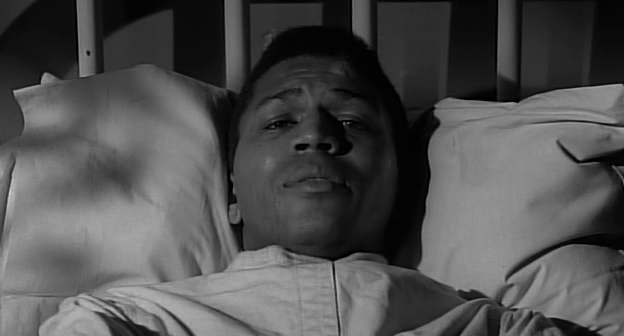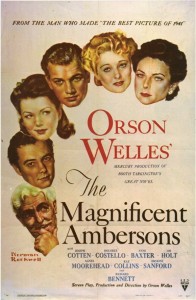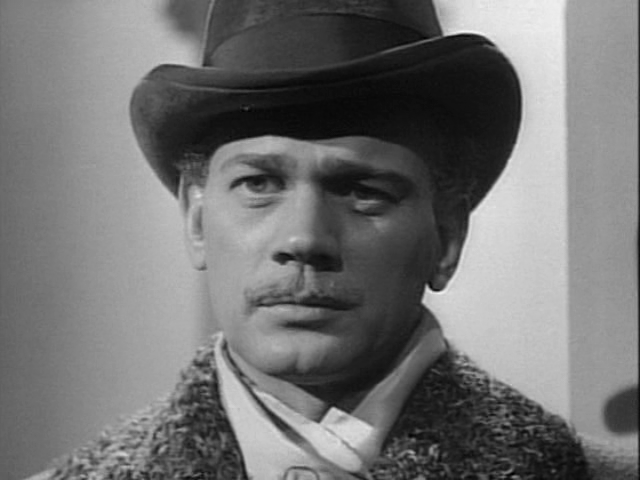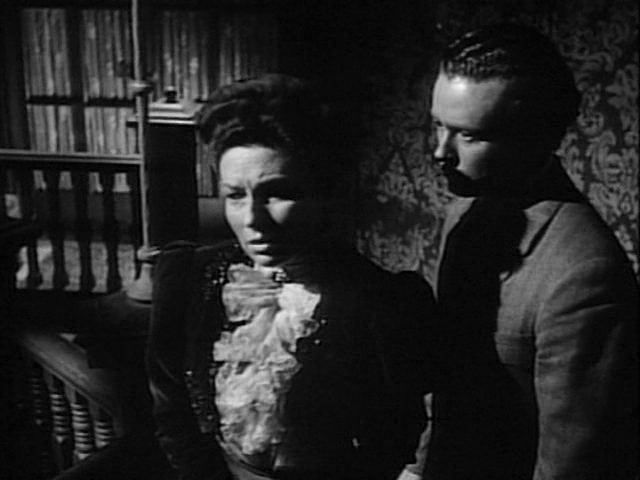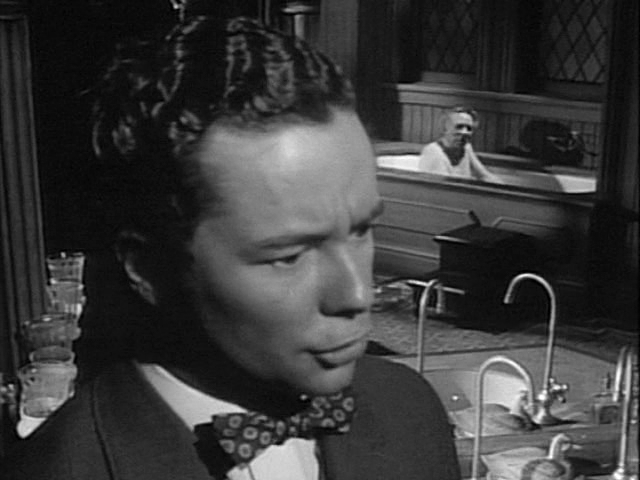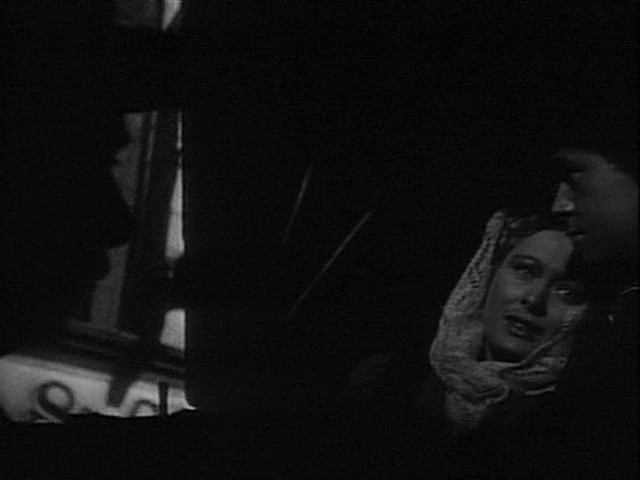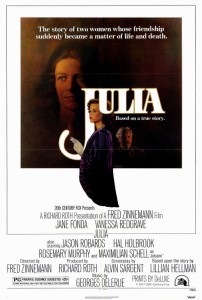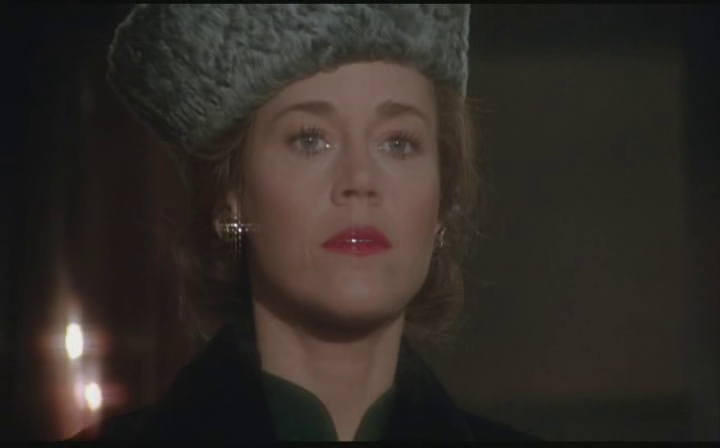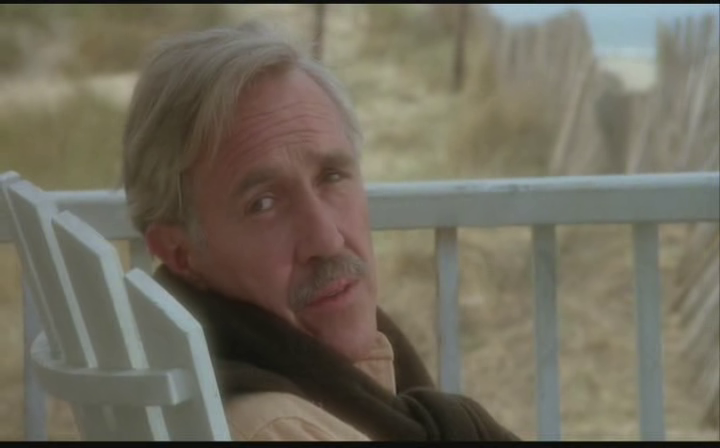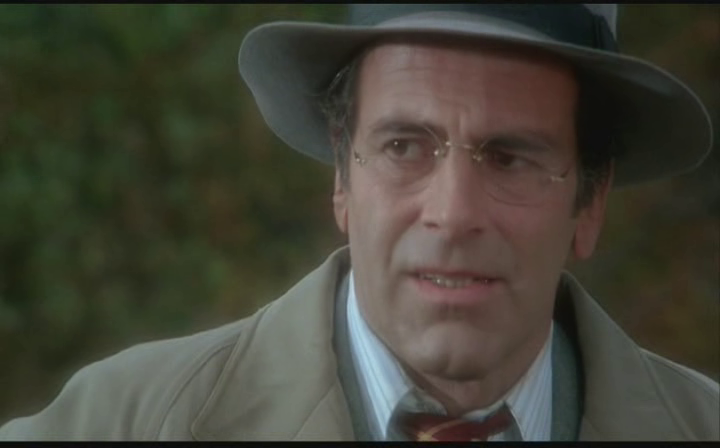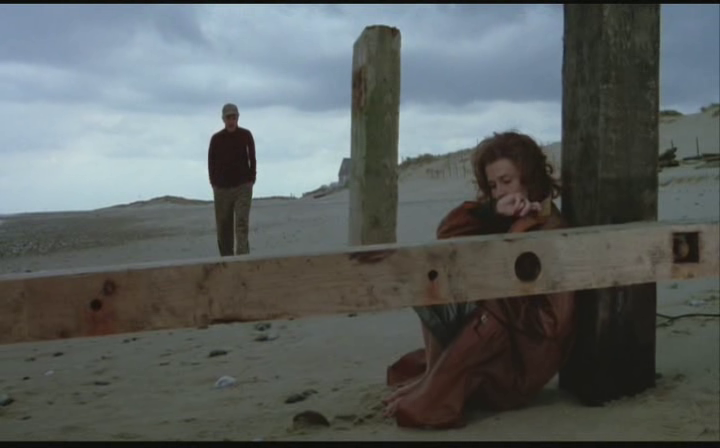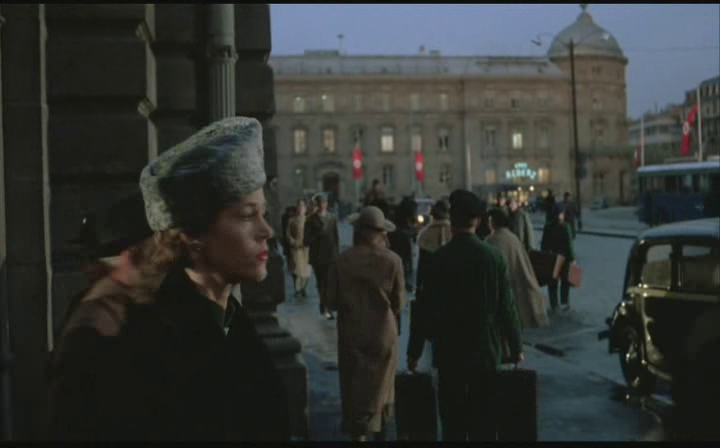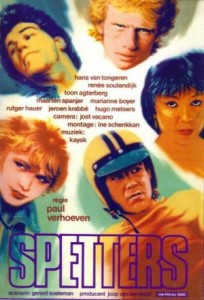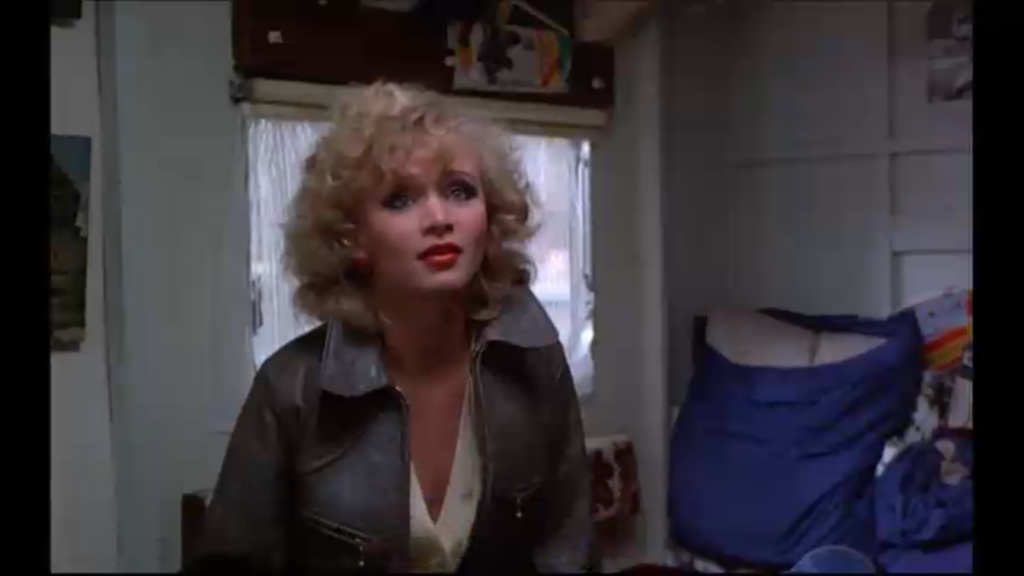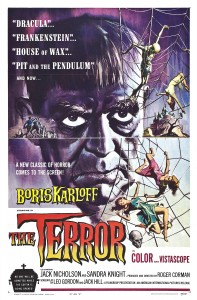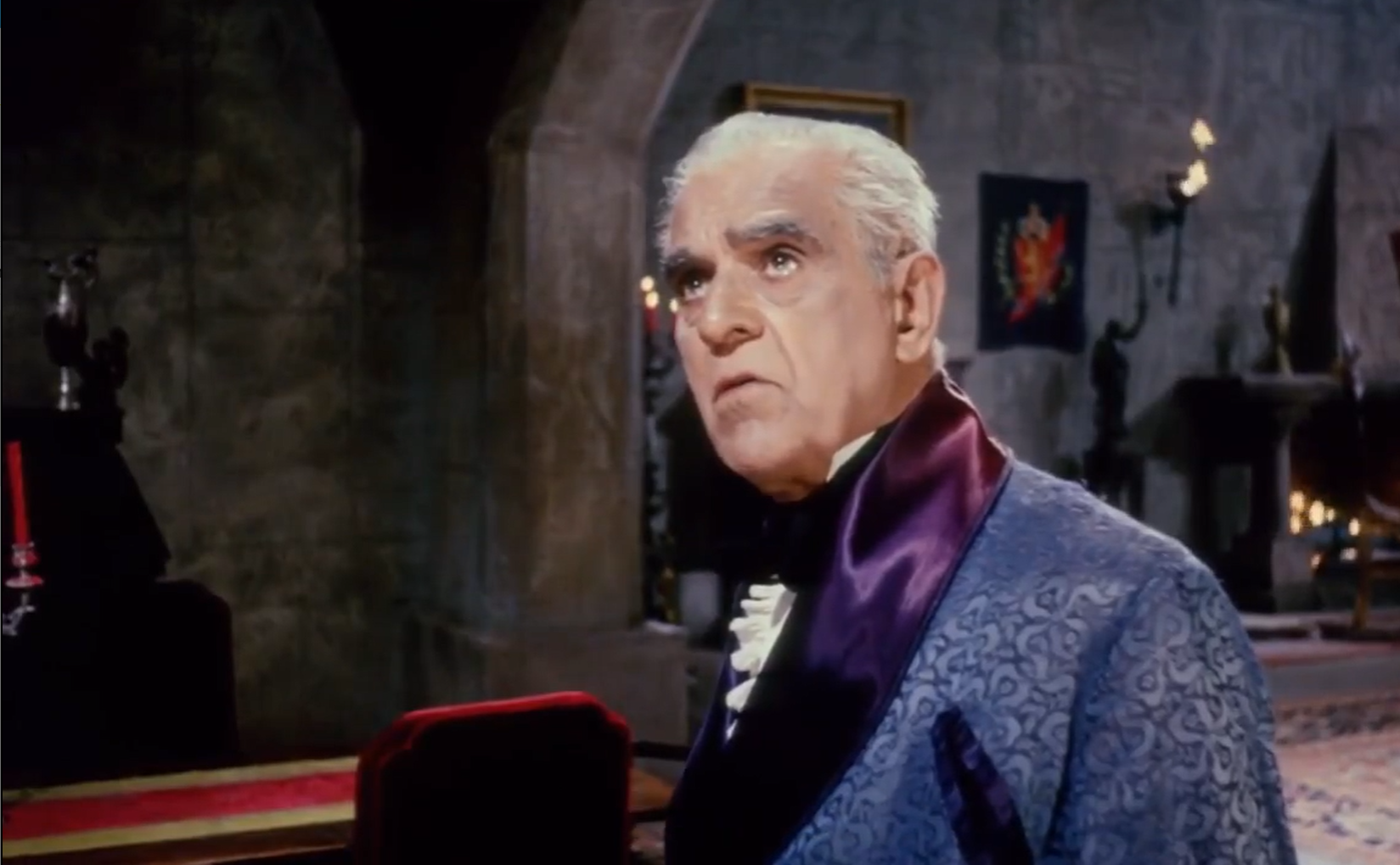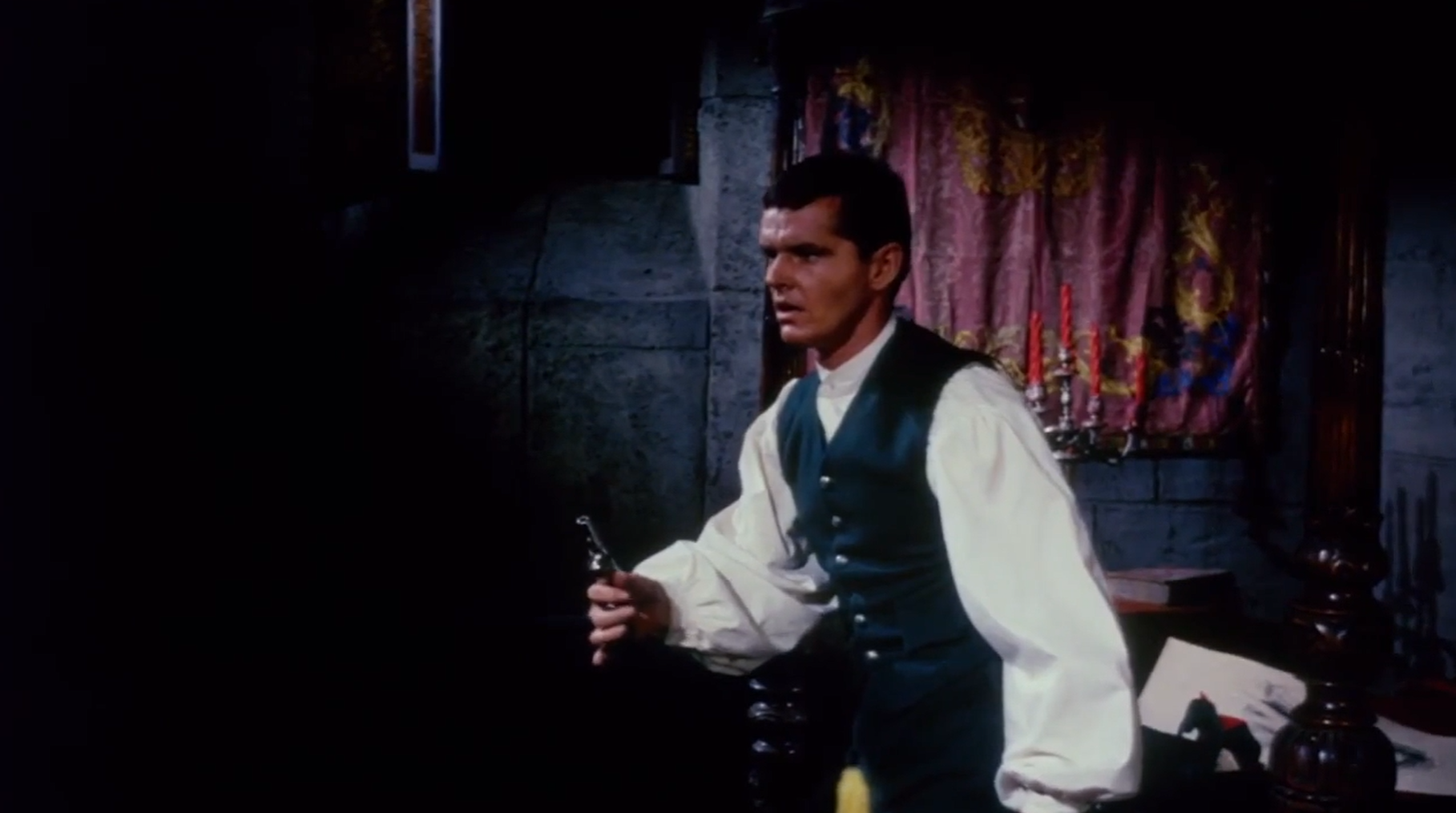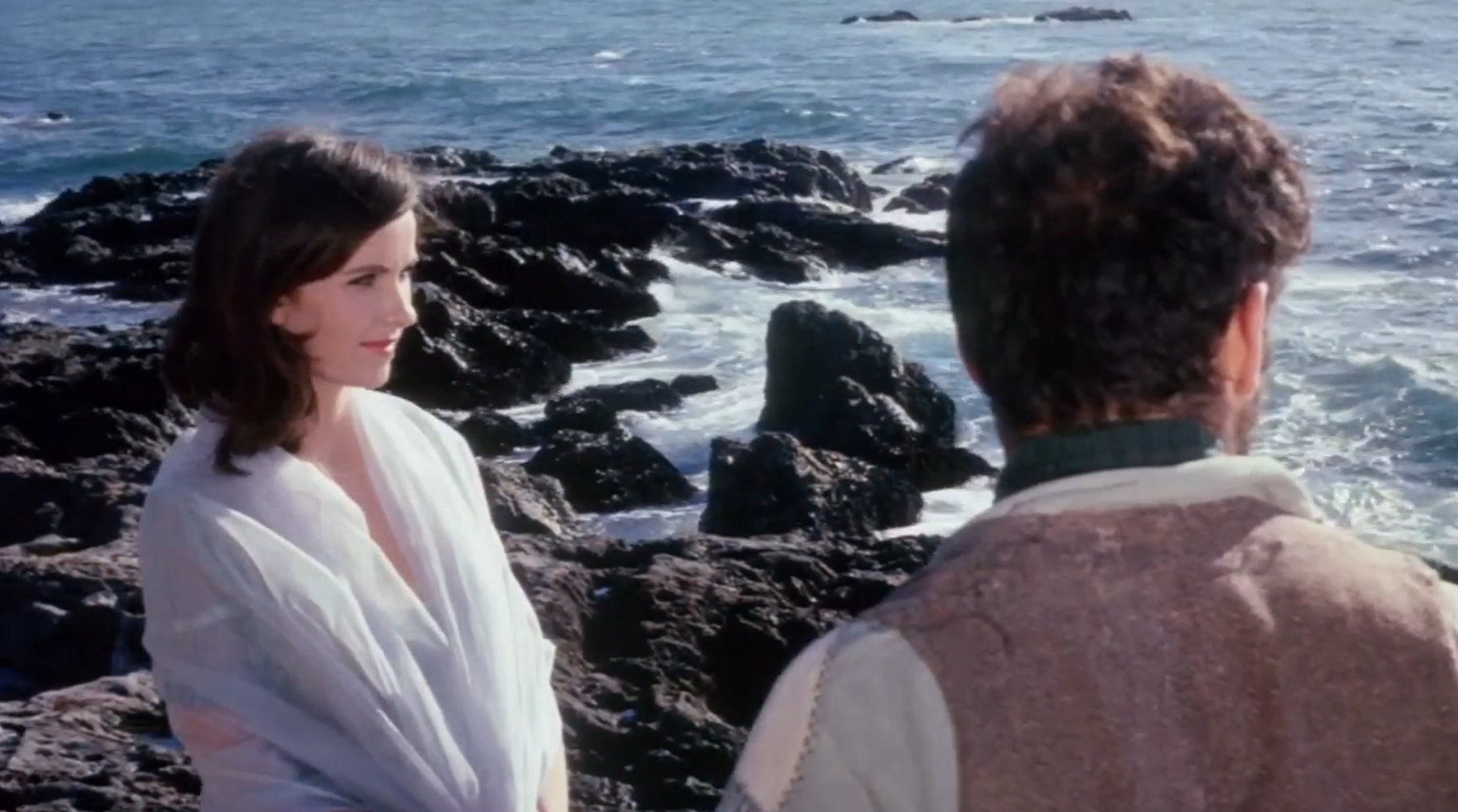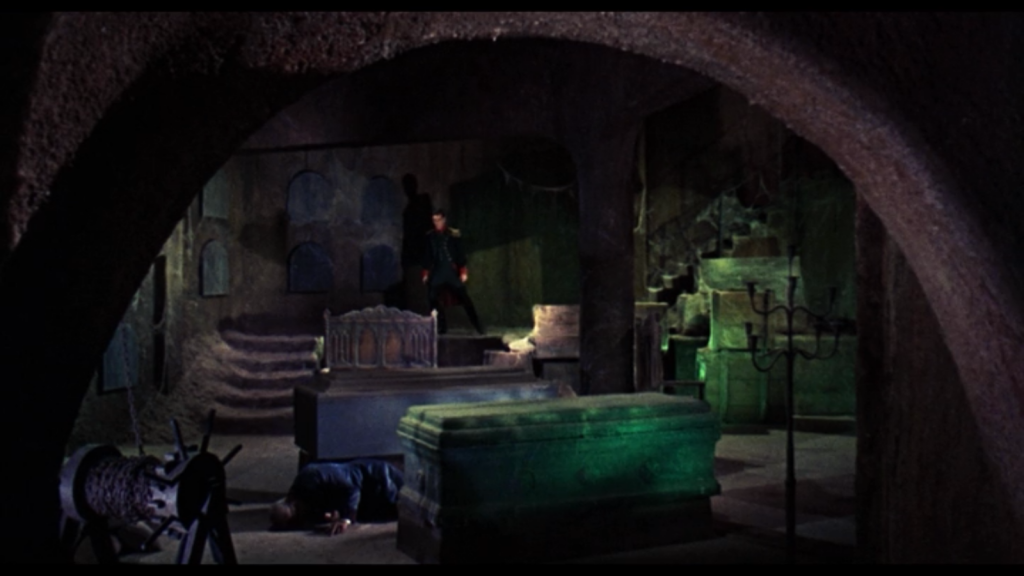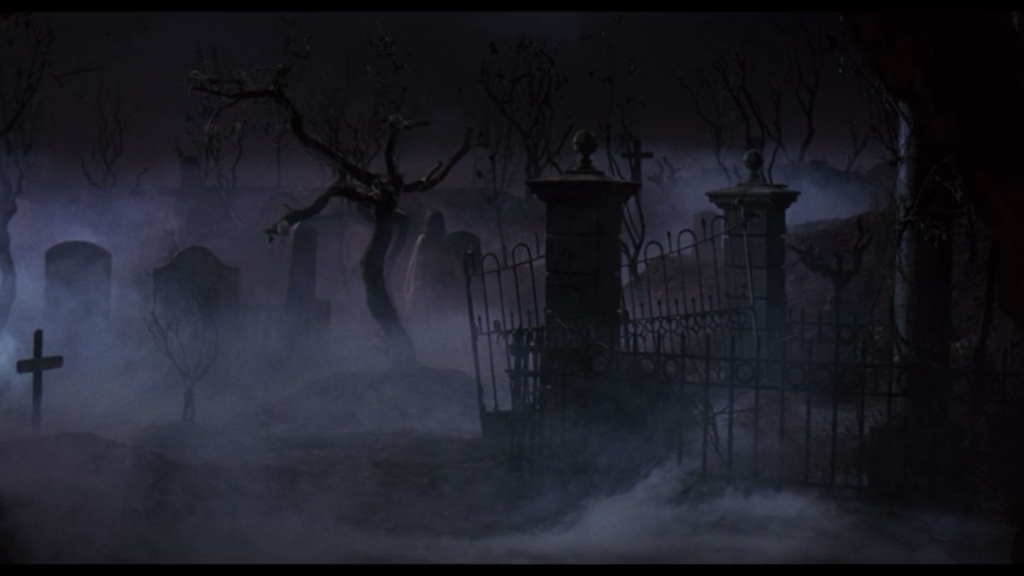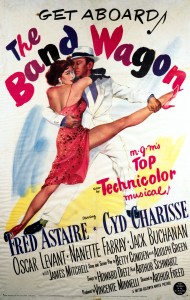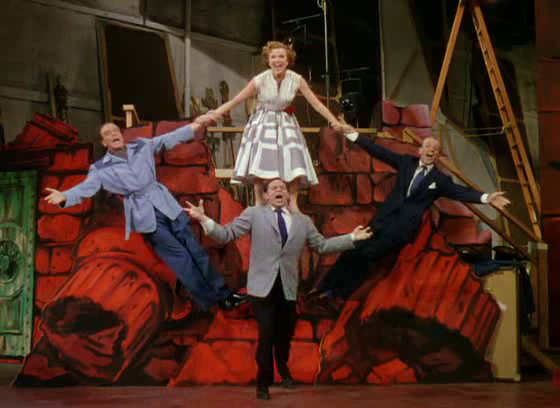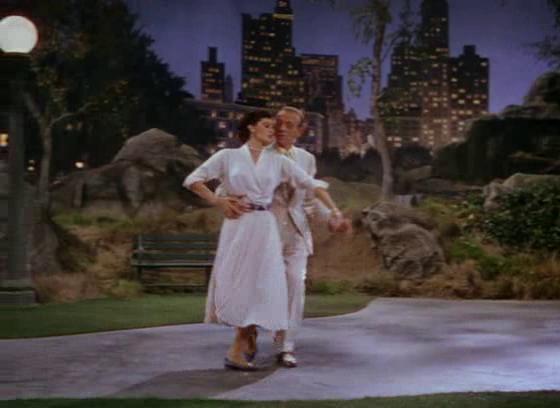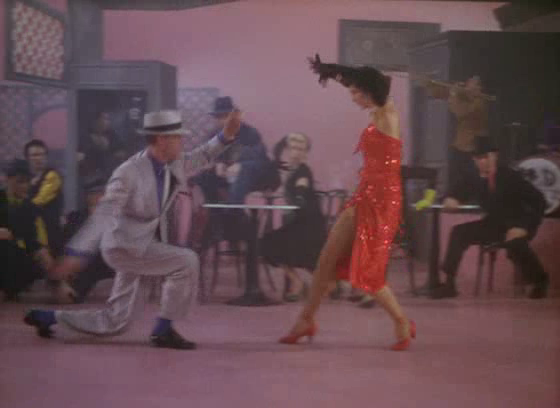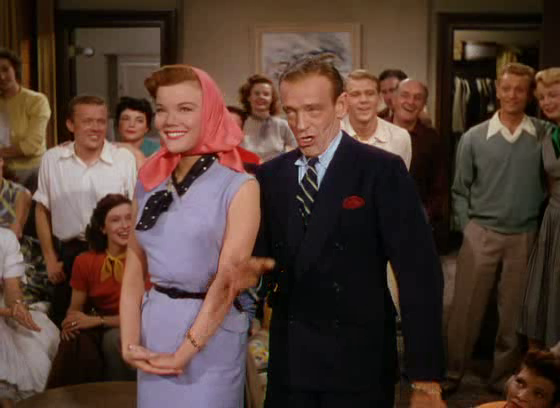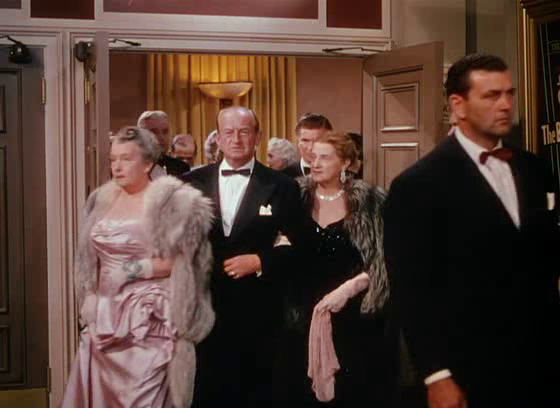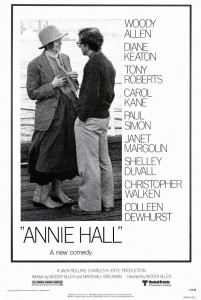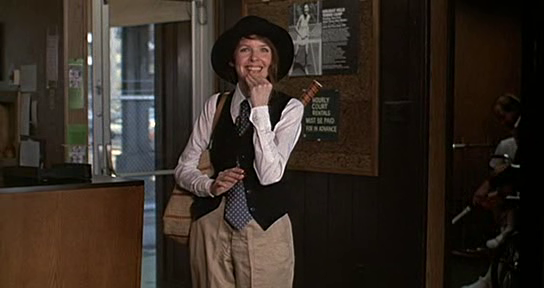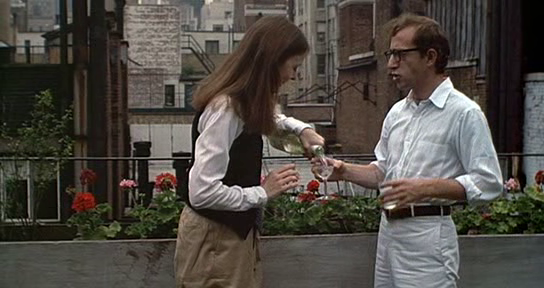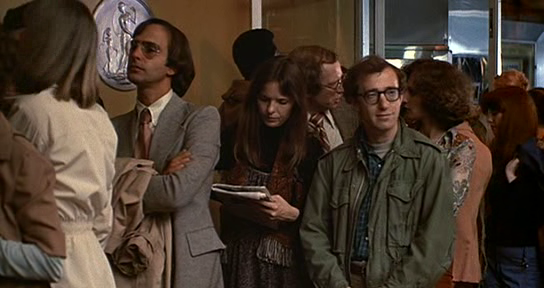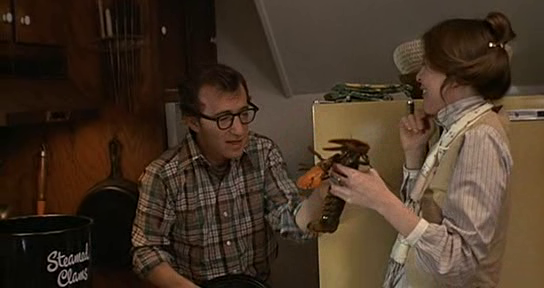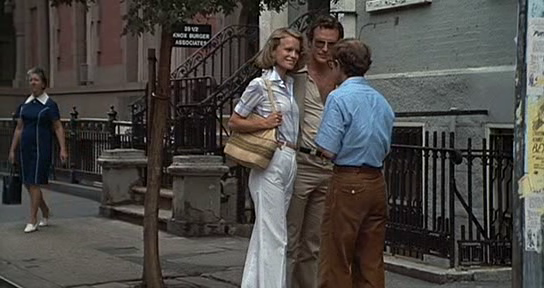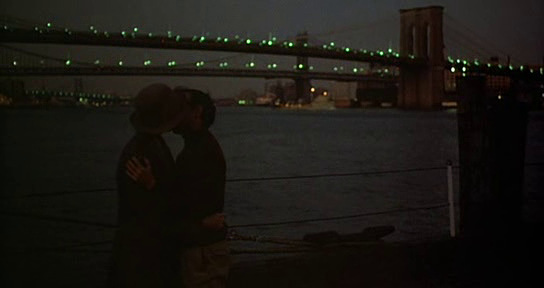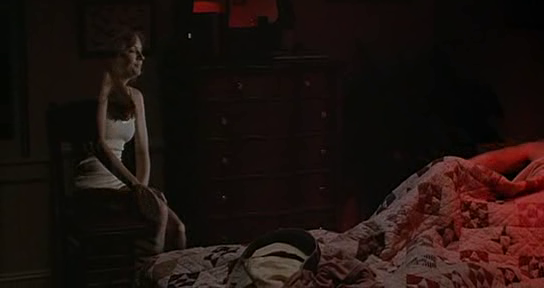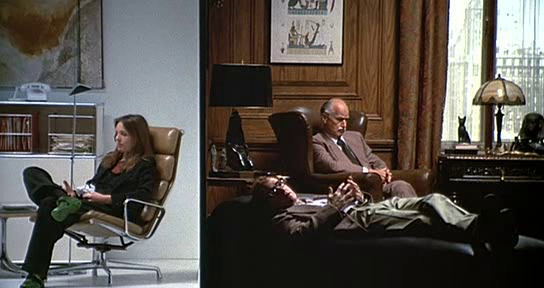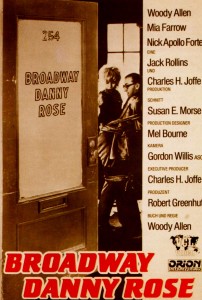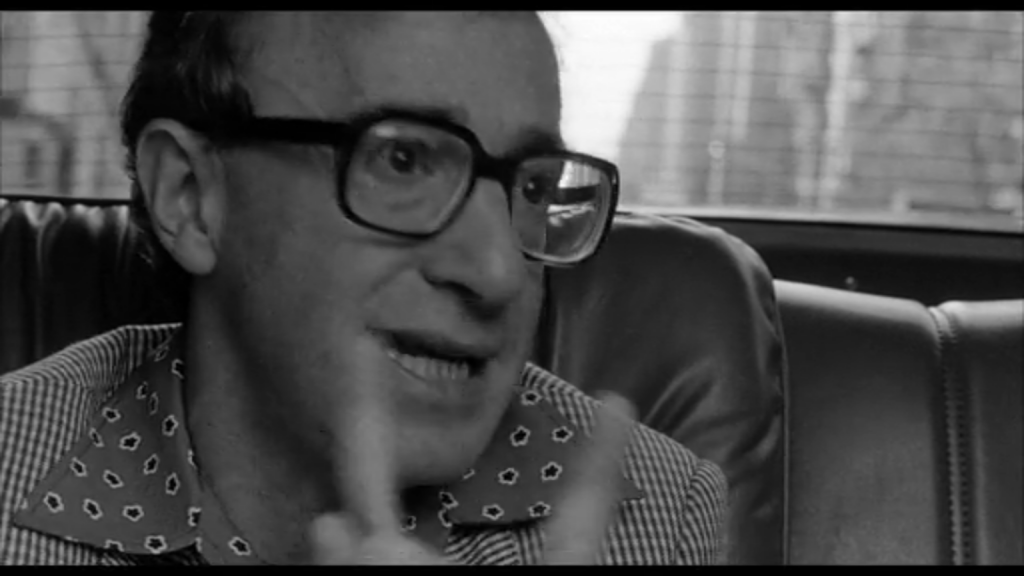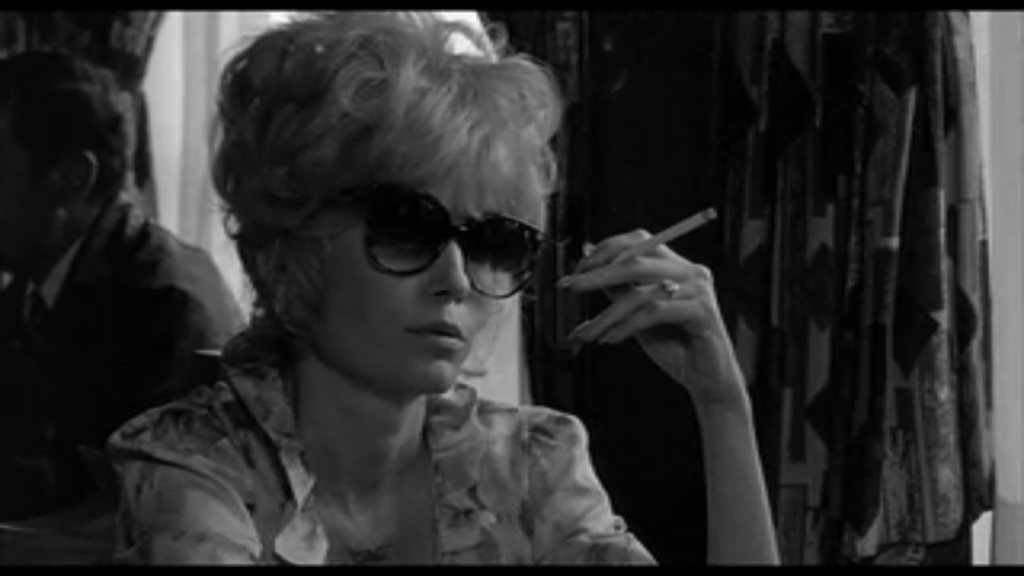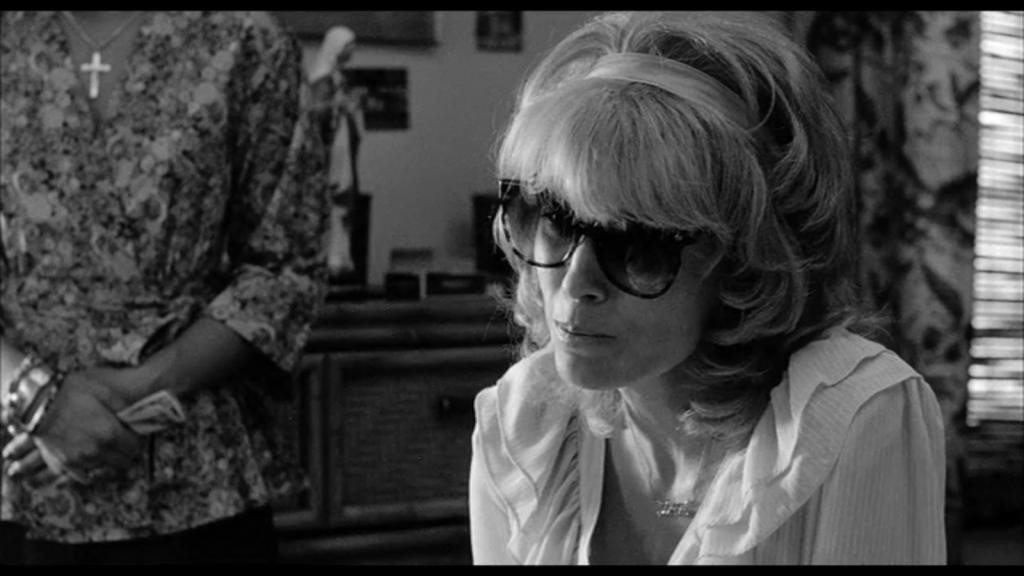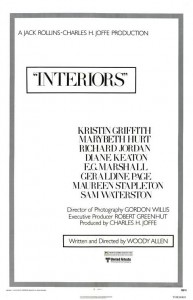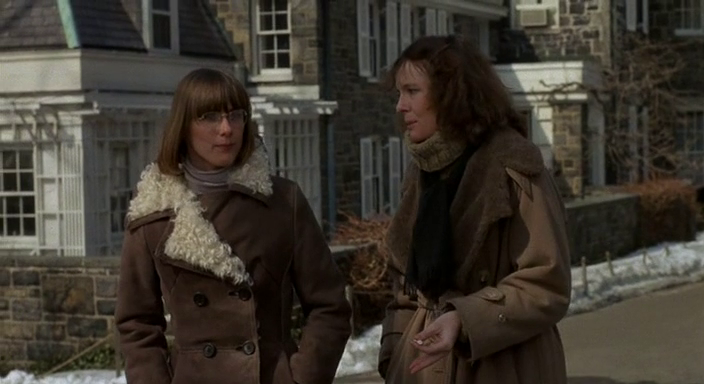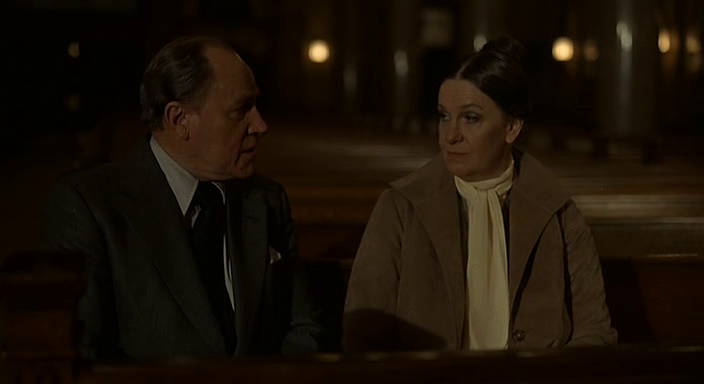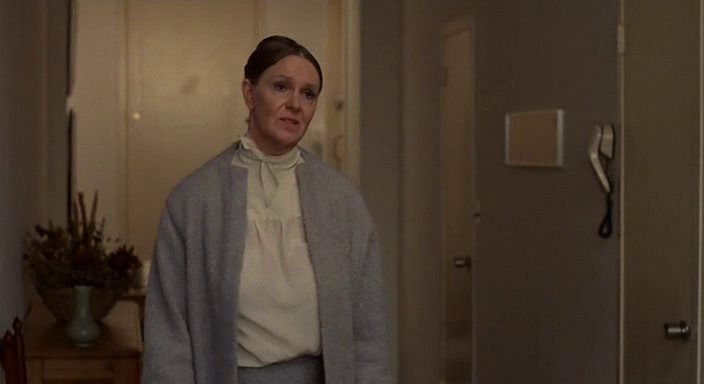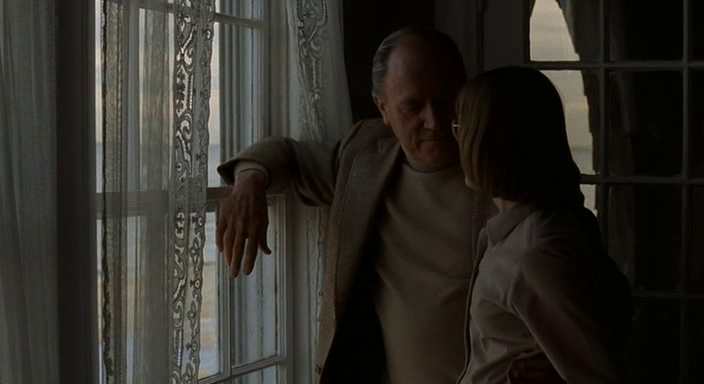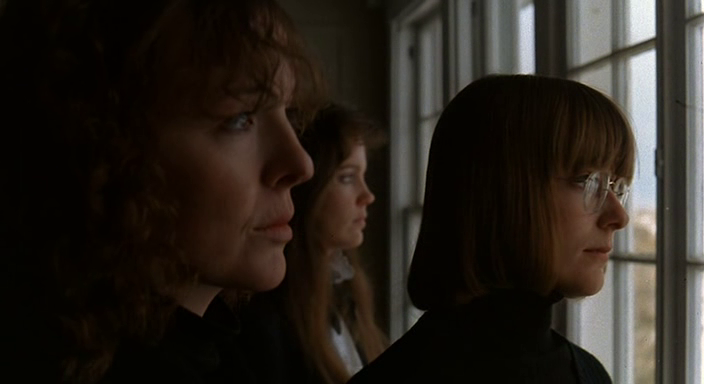|
Genres, Themes, Actors, and Directors:
- Carol Kane Films
- Diane Keaton Films
- Flashback Films
- New York City
- Romantic Comedy
- Shelley Duvall Films
- Star-Crossed Lovers
- Woody Allen Films
Response to Peary’s Review:
Peary notes that “Woody Allen’s first genuine comedy masterpiece is an autobiographical, therapeutic work” in which his on-screen alter-ego, a stand-up comedian named Alvy Singer, “thinks back on his relationship with an equally neurotic” aspiring singer, played by his former girlfriend (Keaton, whose real-life last name was Hall, and whose nickname was Annie). He argues that the “film is very perceptive and romantic in addition to being hilarious” — indeed, it’s amazing how easily we can laugh at and enjoy the proceedings of the film, given that we know from the beginning how things will end for Alvy and Annie. Peary notes that “the two characters are real and we root for them to work out their problems; but, like Alvy, we come to realize that they were meant to be no more than positive influences on each other during difficult, transitional times in their respective lives.” He points out how “sweet” Alvy’s final comment is “at the end” of the film — a moment that’s guaranteed (even on repeat viewings) to bring a lump to your throat.
Peary spends part of his review in both GFTFF and Alternate Oscars — where, like the Academy, he designates Annie Hall as Best Picture of the Year — naming some of the picture’s “so many great moments” (indeed, it’s difficult to resist doing this — my stills below attest to my own challenge in picking just a few scenes to highlight!). These include the classic balcony scene, “during which Allen provides subtitles that reveal what each is really thinking (both worry they’re blowing it with each other)”; “Alvy silencing an obnoxious, self-impressed, self-professed [Marshall] McLuhan expert who talks pretentious drivel in a movie line by pulling McLuhan out of a poster to tell the man, ‘You know nothing of my work'”; “Alvy battling monstrous spiders in Annie’s bathtub”:
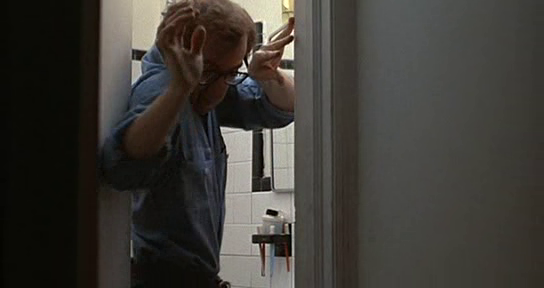
… “Grammy Hall look[ing] at Alvy and… see[ing] him as an Hassidic Jew with a long black beard, curls, black hat, and black frock coat”:
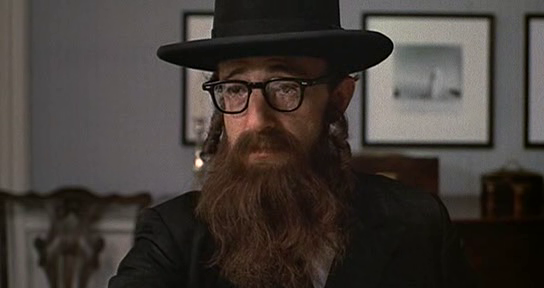
… “Alvy “sneez[ing] $2,000 worth of cocaine across a room”:

… and many, many more.
In his review of Annie Hall for his third Cult Movies book, Peary writes that “it’s safe to say that every Woody Allen film has a cult following”, but “only Annie Hall is loved… by every Allen fan, as well as those obstinate moviegoers who still won’t concede Allen is a great filmmaker.” (One wonders what Peary would think at this point about Allen’s most recent spate of lackluster films… But I’m still more than willing to agree with his assessment.) He notes that “it’s actually hard to find someone who hasn’t seen this irresistible movie several times, who doesn’t have a tender spot for it…, who wouldn’t make it the Woody Allen film they’d like to have if stranded on a desert island”. He further notes the historical relevance of the film by writing that it “marked Allen’s transition from a functional and slapdash, though instinctively funny, filmmaker to one who is technically innovative, thematically sophisticated, intent on capturing the beauty of the women and the city (New York) he loves, eager to explore his characters, and passionate about using the storytelling medium to its fullest”. To that end, one little-discussed aspect of Annie Hall is how cinematically creative it is — see Tim Dirk’s Greatest Films site for an overview of the many techniques Allen employs throughout the film.
Redeeming Qualities and Moments:
Must See?
Yes, most definitely — multiple times. Enjoy!
Categories
- Cult Movie
- Important Director
- Noteworthy Performance(s)
(Listed in 1001 Movies You Must See Before You Die)
Links:
|
